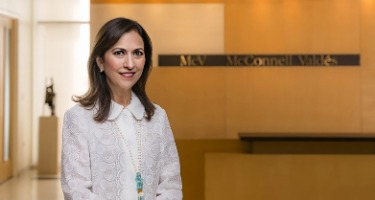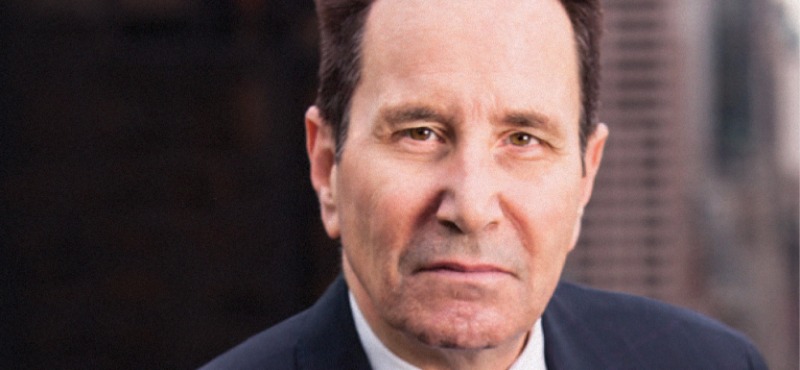In an interview with Best Lawyers CEO Phillip Greer, Monica Biringer and Firoz Ahmed of Osler, Hoskin & Harcourt discuss what drew them to tax law, how Canadian policies might be shaping the field, and the ways technology is changing their practice.
How did you both decide to focus on Tax Law?
Monica Biringer: I have an undergraduate background in math and English. Although that sounds like a strange combination, tax law relies on both those fields, because it involves mathematical concepts and the use of language. Looking back, my decision to go into tax law makes sense, although I wouldn’t have expected it at the time. It’s proven to be a very interesting and dynamic practice area.
Firoz Ahmed: After receiving my Bachelor of Commerce, I attended law school at Queens University in Kingston, where I happened to take a tax law course. I was mathematically inclined as well and thought I might enjoy the practice. I came to Osler's, and I was fortunately correct. Osler's was a leading tax partner back in 1984, and that reputation attracted me.
Concerning the firm, what achievements are you most proud of from this past year?
Monica Biringer: We’re the biggest tax department in a law firm in Canada by a wide margin, but the size itself isn’t what makes me the proudest. What makes me most proud about our firm is the depth and breadth of our practice areas. We have an enormous amount of talent in the tax planning area and that has been true ever since the day that Firoz Ahmed and I joined this firm more than 30 years ago. The other area where we dominate the market is tax disputes or tax litigation. I believe we are the only firm that has such a range of talent in both of those areas. We also have a good number of people that practice in the indirect taxes area. That's a much smaller part of our practice, but it's still an important part.
What other cases have you both handled that really stand out?
Monica Biringer: Two cases that our firm handled stand out, both of which went to the Supreme Court of Canada. One was called Canada TrustCo, which was the first case under the general anti-avoidance rule to reach the Supreme Court of Canada. That was in 2005. The other case was in 2012 and involved Glaxo. This was the first transfer pricing case to reach the Supreme Court of Canada. Those two cases reflect our dominance in both tax disputes and transfer pricing, which are the fastest growing areas in the Canadian tax market.
Firoz Ahmed: I would add the transaction where British American Tobacco acquired 100 percent of the Canadian public company Imasco. Imasco was a tobacco business, but it also owned Canada Trust and Shoppers Drug Mart. It was a complicated transaction where BAT bought Imasco and, in order to pay for it, it flipped Canada Trust to the Toronto Dominion Bank more or less on the same day and later sold Shoppers Inc. It was an incredibly difficult transaction to implement, both from a technical perspective and a timing perspective. Shoppers Drug Mart later became a very, very significant public company, as did the Toronto Dominion Bank. That was truly a landmark deal.
Are there any significant trends you have witnessed in tax law or the tax law sector in the past year?
Monica Biringer: The phenomenon in Canada echoes what is going on around the world. The Canadian government has dedicated hundreds of millions of dollars to hire additional auditors and specialists to combat what they think of as aggressive tax planning and tax avoidance, and they're quite public about their intention to generate billions of dollars of increased revenues for the government. Similarly, the media scrutiny of corporate tax practice is on the rise. We're seeing an increasing number of audits by the CRA, taking aggressive positions both in the avoidance realm and under transfer pricing rules. As a result, there's a continuing and increased demand on tax litigation and tax dispute expertise. Because of the depth of our tax litigation expertise, and our broad range of experts in various aspects of tax law, we're very well positioned to address that trend.
Are there any important policy changes that are happening locally or even globally that are impacting your firm's work in tax law?
Firoz Ahmed: For one, there was the BEPS project, where they were concerned that tax agents were being used to avoid or very maturely reduce the tax that was payable with what government authorities believed was the actual income earning activity. Certainly, aside from transfer pricing, the starting point that will soon come down the road is treaty shock. I think it's affecting the way we're planning today, and I think we've already seen treaty shock in cases that have come through the court system.
The other issues, I believe, are tax rate changes in various countries including the U.S. Fair cuts on tax rates will certainly increase pressure on people, especially from a non-tax perspective where people carry on their operations to try to get the best tax result. As far as Canadian tax policy goes, it's a bunch of anti-avoidance rules that are aimed at closing loopholes or perceived loopholes with rules that are generally too broadly drafted. It really is a bit of a planner's nightmare—not so much of a focus of the rules, but the broad definitions that seem to apply in all aspects of your practice, whether you think they're meant to apply or not.
What ways have changes in technology impacted your firm's work?
Monica Biringer: At the firm level, we have a group called Osler Works, which is a transactional group that deals with delivering practical, cost-effective legal services. There are are many different aspects of that practice in the firm. One goal for the tax litigation practice is to deliver work product to clients in an efficient way that takes advantage of the considerable experience and expertise in our tax disputes practice. This includes a standardized approach to tax litigation documents, discoveries, motions, settlement agreements, to the extent possible.
The other area which has been developed significantly over the past couple of years is on the cost side and reporting to clients. We have a very strong group that delivers pricing estimates to our clients and then follows up with cost control tracking and progress reporting.
Overall, I would describe the impact of technology as having two aspects: one is the efficiency of delivering legal services and the other is the pricing and cost control side.





























